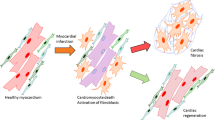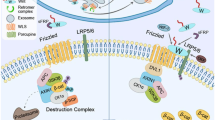Abstract
Lack of gravity during spaceflight has profound effects on cardiovascular system, but little is known about how the cardiomyocytes respond to microgravity. In the present study, the effects of spaceflight on the structure and function of cultured cardiomyocytes were reported. The primary cultures of neonatal rat cardiomyocytes were carried on Shenzhou-6 spacecraft and activated at 4 h in orbit. 8 samples were fixed respectively at 4, 48 and 96 h after launching for immunofluorescence of cytoskeleton, and 2 samples remained unfixed to analyze contractile and secretory functions of the cultures. Ground samples were treated in our laboratory in parallel. After 115 h spaceflight, video recordings displayed that the number of spontaneous beating sites in flown samples decreased significantly, and the cells in the beating aggregate contracted in fast frequency without synchrony. Radioimmunoassay of the medium showed that the atrial natriuretic peptide secreted from flown cells reduced by 59.6%. Confocal images demonstrated the time-dependant disassembly of mirotubules versus unchanged distribution and organization of microfilaments. In conclusion, above results indicate reduced function and disorganized cytoskeleton of cardiomyocytes in spaceflight, which might provide some cellular basis for further investigations to probe into the mechanisms underlying space cardiovascular dysfunction.
Similar content being viewed by others
References
Chruchill S E, ed. Fundamentals of Space Life Sciences. Florida: Krieger Publishing Company, 1997. 41–63
Philpott D E, Popova I A, Kato K, et al. Morphological and biochemical examination of Cosmos 1887 rat heart tissue Part I: Ultrastructure. FASEB J, 1990, 4(1): 73–78
Goldstein M A, Edwards R J, Schroeter J P. Cardiac morphology after conditions of microgravity during COSMOS 2044. J Appl Physiol, 1992, 73(Suppl 2): 94S–100S
Thomason D B, Morrison P R, Oganov V, et al. Altered actin and myosin expression in muscle during exposure to microgravity. J Appl Physiol, 1992, 73(Suppl2): 90S–93S
Lambert C A, Nusgens B V, Lapiere Ch M. Mechano-sensing and mechano-reaction of soft connective tissue cells. Adv Space Res, 1998, 21(8–9): 1081–1091
Ingber D E. How cells (might) sense microgravity. FASEB J, 1999, 13(Suppl): S3–S15
Gruener R, Roberts R, Roistetter R. Reduced receptor aggregation and altered cytoskeleton in cultured myocytes after spacflight. Biol Sci Space, 1994, 8(2): 79–93
Guignandon A, Lafage-Proust M H, Usson Y, et al. Cell cycling determines integrin-mediated adhesion in osteoblastic ROS17/2.8 cells exposed to space-related conditions. FASEB J, 2001, 15(11): 2036–2038
Hughes-Fulford M, Lewis M L. Effects of microgravity on osteoblast growth activation. Exp Cell Res. 1996, 224(1): 103–109
Schatten H, Lewis M L, Chakrabarti A. Spaceflight and clinorotation cause cytoskeleton and mitochondria changes and increases in apoptosis in cultured cells. Acta Astronaut, 2001, 49(3–10): 399–418
Calaghan S C, Le Guennec J Y, White E. Cytoskeletal modulation of electrical and mechanical activity in cardiac myocytes. Prog Biophys Mol Biol, 2004, 84(1): 29–59
Hori M, Sato H, Kitakaze M, et al. β-adrenergic stimulation disassembles microtubules in neonatal rat cultured cardiomyocytes through intracellular Ca2+ Overload. Circ Res, 1994, 75(2): 324–334
McGrath M F, de Bold M L, de Bold A J. The endocrine function of the heart. Trends Endocrinol Metab, 2005, 16(10): 469–477
He X L, Dukkipati A, Garcia K C. Structural determinants of natriuretic peptide receptor specificity and degeneracy. J Mol Biol, 2006, 361(4): 698–714
Cameron V A, Ellmers L J. Minireview: Natriuretic peptides during development of the fetal heart and circulation. Endocrinology, 2003, 144(6): 2191–2194
Xi Y T, Wu G R, Bai X J, et al. Mechanical stretch-induced hypertrophy of neonatal rat ventricular myocytes is mediated by beta(1)-integrin-microtubule signaling pathways. Eur J Heart Fail, 2006, 8(1): 16–22
Rubin J, Rubin C, Jacobs C R. Molecular pathways mediating mechanical signaling in bone. Gene, 2006, 15(367): 1–16
Crawford-Young S J. Effects of microgravity on cell cytoskeleton and embryogenesis. Int J Dev Biol, 2006, 50(2–3): 183–191
Rosner H, Wassermann T, Moller W, et al. Effects of altered gravity on the actin and microtubule cytoskeleton of human SH-SY5Y neuroblastoma cells. Protoplasma, 2006, 229(2–4): 225–234
Dai Z, Li Y, Ding B, et al. Actin microfilaments participate in the regulation of the COL1A1 promoter activity in ROS17/2.8 cells under simulated microgravity. Adv Space Res, 2006, 38(6): 1159–1167
Vassy J, Portet S, Beil M, et al. The effect of weightlessness on cytoskeleton architecture and proliferation of human breast cancer cell line MCF-7. FASEB J, 2001; 15(6): 1104–1106
Xiong J H, Li Y H, Nie J L, et al. Effects of quercetin on the cytoskeleton of rat cardiac myocytes cultured in vitro under simulated microgravity. Acta Zool Sin (in Chinese), 2003, 49(1): 98–103
Papaseit C, Pochon N, Tabony J. Microtubule self-organization is gravity-dependent. Proc Natl Acad Sci USA, 2000, 97(15): 8364–8368
Glade N, Beaugnon E, Tabony J. Ground-based methods reproduce space-flight experiments and show that weak vibrations trigger microtubule self-organisation. Biophys Chem, 2006, 121(1): 1–6
Birukova A A, Smurova K, Birukov K G, et al. Microtubule disassembly induces cytoskeletal remodeling and lung vascular barrier dysfunction: role of Rho-dependent mechanisms. J Cell Physiol, 2004, 201(1): 55–70
Kanthou C, Tozer G M. The tumor vascular targeting agent combretastatin A-4-phosphate induces reorganization of the actin cytoskeleton and early membrane blebbing in human endothelial cells. Blood, 2002, 99(6): 2060–2069
Ingber D E. Tensegrity I. Cell structure and hierarchical systems biology. J Cell Sci, 2003, 116(Pt7): 1157–1173
Guo C, Ren H. Formins: Bringing new insights to the organization of actin cytoskeleton. Chin Sci Bull, 2006, 51(24): 2937–2943
Polte T R, Eichler G S, Wang N, et al. Extracellular matrix controls myosin light chain phosphorylation and cell contractility through modulation of cell shape and cytoskeletal prestress. Am J Physiol Cell Physiol, 2004, 286(3): C518–C528
Ren X D, Kiosses W B, Schwartz, M A. Regulation of the small GTP binding protein Rho by cell adhesion and the cytoskeleton. EMBO J, 1999, 18(3): 578–585
Henderson J R, Pomies P, Auffray C, et al. ALP and MLP distribution during myofibrillogenesis in cultured cardiomyocytes. Cell Motil Cytoskeleton, 2003, 54(3): 254–265
Nag A C, Lee M L, Sarkar F H. Remodelling of adult cardiac muscle cells in culture: dynamic process of disorganization and reorganization of myofibrils. J Muscle Res Cell Motil, 1996, 17(3): 313–334
Rothen-Rutishauser B M, Ehler E, Perriard E, et al. Different behaviour of the non-sarcomeric cytoskeleton in neonatal and adult rat cardiomyocytes. J Mol Cell Cardiol, 1998, 30(1): 19–31
Webster D R, Patrick D L. Beating rate of isolated neonatal cardiomyocytes in regulated by the stable microtubule subset. Am J Physiol Heart Circ Physiol, 2000, 278(5): H1653–H1661
Cooper G. Cytoskeletal networks and the regulation of cardiac contractility: Microtubules, hypertrophy, and cardiac dysfunction. Am J Physiol Heart Circ Physiol, 2006, 291(3): H1003–H1014
Rogers S L, Gelfand VI. Membrane trafficking, organelle transport, and the cytoskeleton. Curr Opin Cell Biol, 2000, 12(1): 57–62
Chabin-Brion K, Marceiller J, Perez F, et al. The Golgi complex is a microtubule-organizing organelle. Mol Biol Cell, 2001, 12(7): 2047–2060
Lewis M L, Cubano L A, Zhao B, et al. cDNA microarray reveals altered cytoskeletal gene expression in space-flown leukemic T lymphocytes (Jurkat). FASEB J, 2001, 15(10): 1783–1785
Zhang H, Yi X, Sun X, et al. Differential gene regulation by the SRC family of coactivators. Genes Dev, 2004, 18(14): 1753–1765
Zhang H, Sun L, Liang J, et al. The catalytic subunit of the proteasome is engaged in the entire process of estrogen receptor-regulated transcription. EMBO J, 2006, 25(18): 4223–4233
Author information
Authors and Affiliations
Corresponding author
Additional information
Supported by China Manned Space Engineering Project, National Basic Research Program of China (Grant No. 2006CB705F04), National High Technology Research and Development Program of China (Grant No. 2002AA743051), National Natural Science Foundation of China (Grant No. 30370365), and Advanced Space Medico-Engineering Research Project of China (Grant No. SJ200508)
About this article
Cite this article
Yang, F., Li, Y., Ding, B. et al. Reduced function and disassembled microtubules of cultured cardiomyocytes in spaceflight. Chin. Sci. Bull. 53, 1185–1192 (2008). https://doi.org/10.1007/s11434-008-0167-y
Received:
Accepted:
Published:
Issue Date:
DOI: https://doi.org/10.1007/s11434-008-0167-y




